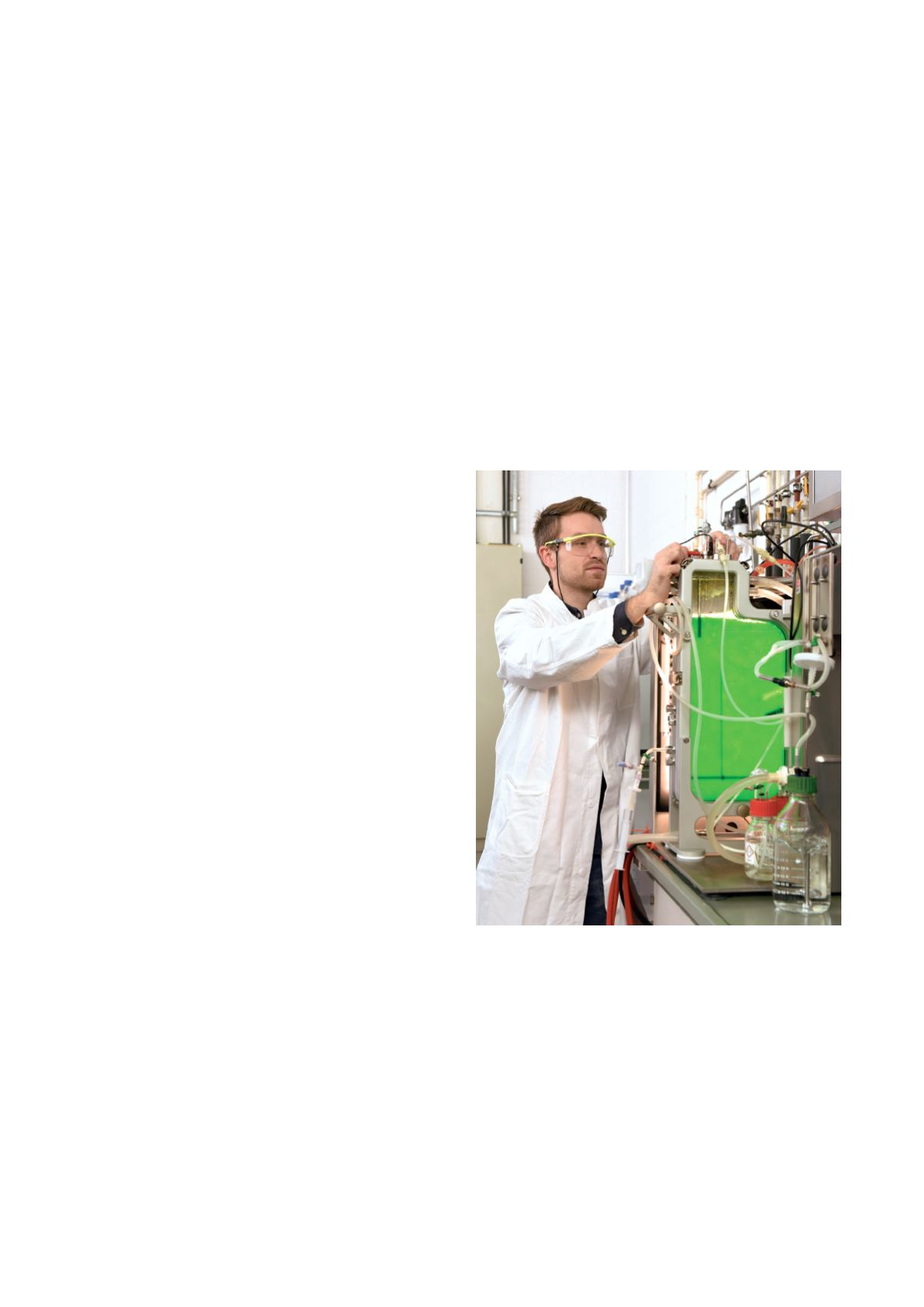

176
Systems Biotechnology
Model-based metabolic engineering for bacterial systems
n
Systems Biotechnology combines methods from engineering sciences, microbiology,
and computational sciences to improve biotechnological processes.
Systems Biotechnology focuses on application of
methods from systems biology to problems related to
biotechnology. Central to our current projects is the
understanding of resource allocation during growth and
production. The heterologous protein production with
microorganisms becomes more and more an important
pillar in various fields of biotechnology. Combing theor
etical methods with experimental studies we systematic
ally analyze the population behavior in dependence
of different load strength. Here, a new experimental
approach that allows monitoring of mRNA as well pro-
tein dynamics in the same cell are applied and fitted to
mathematical models. This opens new perspectives in the
understanding of single cell dynamics and in designing
new strains in biotechnology.
Fundamentals for Experimental Analysis
and Mathematical Modeling of Cellular Networks
Regulation of transcriptional and biochemical processes in
a bacterial cell is essential for survival in changing environ-
mental conditions and the understanding of the events
taking place is pivotal for the use of bacteria in industrially
interesting applications. Research of the Systems Biotech-
nology Group targets different key regulatory devices, like
the phosphotransferase system in
Pseudomonas putida
or the ComRS two component system in Streptococcus
mutans. The experimental information derived either in the
group’s own laboratory or by collaboration partners gives
rise to mathematic models that contribute to a better
understanding of cellular processes.
Another research focus lies on the establishment of a
co-culture between a photosynthetically active organism
extruding sugar molecules together with heterotrophic
organisms capable of producing industrially interesting
compounds. To this end a photobioreactor is employed
which allows the cultivation and collection of a vast
amount of data used to describe the population-based
variations in the overall process.
Project
■■
e:biofilm, BMBF e:Bio initiative
Metabolic Engineering of Halophiles:
Towards
Halomonas elongata
as Industrial Producer
The project focuses on ectoine production by the halo-
philic bacterium
Halomonas elongata
. The reasons for
that choice are not only the interest of ectoine as a novel
product for medicine and cosmetics but also the potential
of
H. elongata
for further biotechnological applications.
Ectoine is a highly soluble organic molecule that belongs
to the group of compatible solutes and is found as an
osmotic agent in a wide range of cell types and has also
been shown to stabilize and protect macromolecules in
adverse conditions. The current applications of ectoine
cover a wide range of different fields like biomedicine,
cosmetics, support roles in analytic and industrial pro-
cesses and bioremediation.
Projects
■■
OPHELIA – optimization of Halomonas elongate for
industrial applications, BMBF e:Bio initiative
■■
HOBBIT – Halophilic bacteria for bio catalysis



















